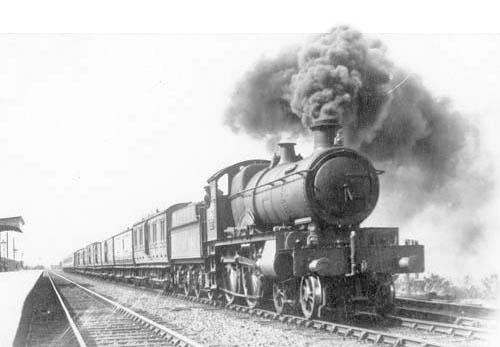|
|
 |
 |
|
GWR Route: Banbury to Wolverhampton
Fenny Compton: gwrfc552
 |
An unknown GWR 4-4-0 County class locomotive is seen at the
head of an up train in 1920s. Know to railwaymen as 'Churchwards rough riders',
the 'County' class of locomotives looked very much like a shortened version of
the 'Saint' class. The reason for the design was to work the cross country
services on the Shrewsbury to Hereford line, a line which was jointly owned by
the GWR and the London and North Western Railway. The LNWR refused to allow
4-6-0 locomotives on this line and so Churchward designed an engine with enough
power in reserve should the need arise for it's use on other lines, but as Sir
William Stanier noted that "Churchward was not going to be instructed by Webb,
the Locomotive Superintendent of the LNWR, and designed an engine that had
plenty of power to run the service but which had a front end too powerful for
the wheelbase". The first two batches of 1904 and 1906 were built with the
square frame ends whereas the last batch were fitted with the curved framing.
Previous versions were then modified to the newer design. As with most other
GWR engines, superheating was added from 1909 and top feed from 1911. As common
with other 4 - 4 - 0 locomotives of this period, greater reliance was given to
4 - 6 - 0 locomotives for express passenger services and 2 - 6 - 0 Moguls for
other mixed traffic work, and withdrawals began in February 1930 with number
3833 County of Dorset. The last engine to be withdrawn was number 3834 County
of Somerset in November 1933.
Courtesy of the Great Western Archive.
 back back

|
|
|
